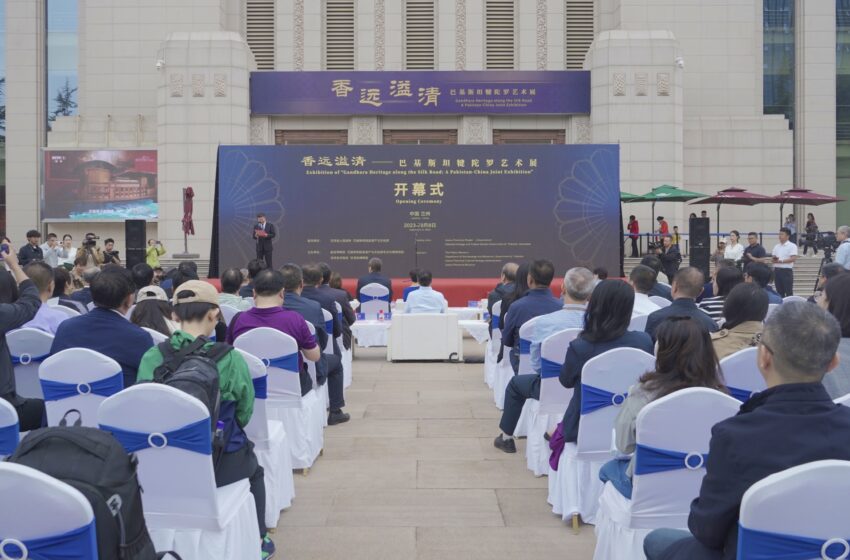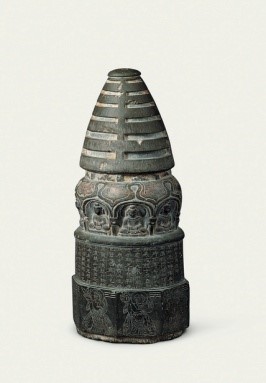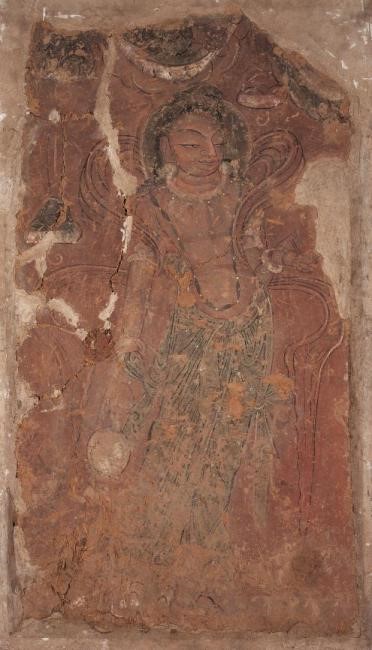Thousand-yr-old Gandhara art shining at Chinese museum

LANZHOU, Sep 8 – “The Gandhara art itself comes from the blending of several ancient civilizations, which collided with each other and burst out bright sparks. This is also the significance of the interconnection between the ancient Silk Road and the modern Belt and Road across time and space,” noted Ban Rui, Deputy Director of Gansu Provincial Museum, during an exclusive interview with Gwadar Pro.
The “Gandhara Heritage along the Silk Road: A Pakistan-China Joint Exhibition” co-sponsored by the Palace Museum, Department of Archaeology and Museums, Government of Pakistan, Gansu Provincial Cultural Heritage Administration, Gansu Provincial Museum, was launched today at Gansu Provincial Museum in Lanzhou City, aims to promote mutual understanding between China and Pakistan, in particular to make Chinese people aware of the depth and charm of Gandhara culture.

Humaira Ahmed, Secretary, National Heritage and Culture Division of Pakistan, delivered a speech
A total of 212 valuable cultural relics are on display in this exhibition that continues until December 8, including 173 Gandhara pieces from the collections of seven museums, including the National Museum of Pakistan, the Islamabad Museum, the Swat Museum, the Peshawar Museum, the Honde Museum, the Deere Museum, the Taxila Museum, and 30 pieces from the Palace Museum.
The exhibition is divided into three parts, namely the birth of Gandhara civilization under multiculturalism (1st century BC – 5th century AD), the Glory of Gandhara Art (1st-5th century AD) and the Afterglow (6th to 14th century AD), reflecting the infinite vitality of Gandhara art in the continuous exchanges and mutual learning of civilizations along the Silk Road.
With active and continuous exchanges and mutual inspiration along the Silk Road, Gandhara showed unparalleled vitality and creativity and had a profound impact on the spread of Asian civilization.
“The territory of the ancient kingdom of Gandhara was located in the northwest of the Indian subcontinent, with its core area in Peshawar, Pakistan. When Buddhism, which was born in India in the 6th century BC, was gradually influenced by the highly mature Greek sculpture art introduced along the Silk Road, and began to have statues. This epoch-making change happened in Gandhara,” Ban told the reporter, “In the first century AD, the sculpture art from ancient Greece and local culture including Buddhist culture merged to form a unique Gandhara and continued to spread through the Silk Road. In China, it merged with traditional culture again. Obviously, the pursuit of precision in Western (Greek-Roman) sculpture and the pursuit of freehand brushwork in Eastern art influenced each other. During the Sixteen Kingdoms Period (304-439 AD), the early Buddhist statues of the Northern Dynasties still retained part of the realistic style of Gandhara, by which fully demonstrates that China and Pakistan, as two ancient civilizations on the Silk Road, have a long history of artistic exchanges.”
The reporter learned that among the nine Gandhara-style relics on display that belong to the Gansu Provincial Museum, two representative ones, namely China’s national treasure-Gao Shan Mu Stone Statue Pagoda, and the representative work of early Chinese Buddhist murals-Beiliang painted Bodhisattva murals in the Tiantishan Grottoes, could be described as perfect products of Gandhara-Chinese cultural fusion.

Gao Shan Mu Stone Statue Pagoda

Beiliang painted Bodhisattva murals
“For us, this exhibition means the first step between our two parties, I sincerely hope to establish a long-term cooperative relationship with Pakistani counterparts,” Ban emphasized, “as we all know, Pakistan, as an important node of the ancient land Silk Road, enjoys multitudinous historical and cultural relics. If we can have more in-depth cooperation in the future, on the one hand, we can introduce more precious exhibitions of the Pakistani museum including Gandhara art, on the other hand, it’s a golden opportunity to let our local cultural relics “go global” to Pakistan, shining on our brother’s land, which also should be the integral meaning of all-round cooperation between the Belt and Road Initiative and the CPEC.”


